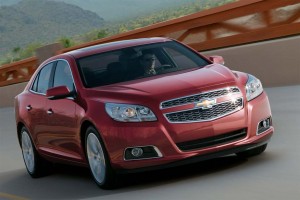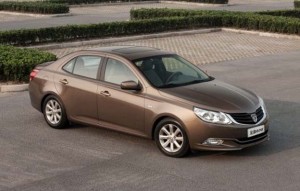General Motors plans to invest between $5 billion and $7 billion in a bid to double what are already record sales in the booming Chinese automotive market.
Last October, the maker became the first ever to top 2 million sales in China during a single year, ending 2010 with a grand total of 2.35 million. But the carmaker’s top China hand says the goal is to pump that up to around 5 million units by 2015.
The new Chevrolet Malibu, getting its official launch at the 2011 Shanghai Motor, is one of the keys to GM’s planned growth.
“We have set some aggressive goals with our five-year plan,” said GM China President and managing director Kevin Wale. “We are confident that we will achieve every one of our goals by providing local consumers great products and compelling designs relevant to the China market and by following our strategy of working in China, with China, and for China,” he said during the opening of the 2011 Shanghai show.
GM has all the fundamentals in place to continue to lead the industry in China, said Wale, emphasizing the maker’s plans to build on its well-established foundation in the fast-growing market. GM was one of the first foreign carmakers to set up a significant presence in China, and over the last decade it has rapidly expanded not just its model line-up but the mix of brands it uses to appeal to various segments of the Chinese market.
That includes the new Baojun – or “treasured horse” – marque, which is targeting first-time buyers in second and third-tier Chinese cities as the economic growth along the Pacific Coast spreads inland.
“The underlying trends in the market are very strong and GM has doubled its sales in the past two years, noted Wale, adding GM also posted record sales in the first quarter.
Nonetheless, hitting the 2015 target will require the U.S. maker to add additional capacity in China and help suppliers prepare for the higher level of demand, he said.
GM already has four separate projects in different parts of China that will add approximately 800,000 units of capacity to the 2.9 million units already installed at plants in China.
“Over the last 15 years, GM has focused on growing all areas of our business in China – from our brands to our product lineup to new business opportunities – both on our own and with our partners. We have recorded many achievements, but we still have a lot more to achieve,” Wale stressed.
GM has adopted a multi-brand strategy to meet the differing and constantly changing needs of the market. It offers a broad portfolio of brands to ensure it brings the right products to its customers at the right time.
During the next five years, GM will be introducing more than 60 new models and major product upgrades. Its two mainstream brands, Buick and Chevrolet, will account for nearly half.
Buick will introduce about 12 new and upgraded products to expand its image as the leading premium vehicle brand in China. In addition to rolling out a variety of new body styles and lifestyle vehicles, Buick will also offer its customers the latest technologies.
From Chevrolet will come 15 new models and upgrades, which will range from affordable small cars to midsize sedans. Chevrolet will also bring to the market a new lineup of SUVs and performance vehicles.
A significant part of the GM strategy relies on local design and engineering to support its product roll-out. GM is opening a new Advanced Design Studio at the PATAC technical center in Pudong, the new, industrialized center across the river from old Shanghai.
“Successful new models like the Chevrolet New Sail and new Buick GL8, and the upcoming Baojun 630, have all been developed in China,” Wale noted. “Our growing product development capability will enable us to continue moving quickly to meet the unique needs of the market and our customers nationwide.”
Like its competitors – both foreign and Chinese domestic – GM is under pressure to make some major changes in the type of products it is building.
Electrification has become the overriding trend of the global automotive industry for reducing its century-long dependence on petroleum, according to Wale – and nowhere more so than China, where government regulators want to reduce the country’s endemic smog problems and curb dependence on foreign oil.
GM offers the most comprehensive range of new energy products of any automaker in China, the executive claimed. It has already introduced in China the Buick LaCrosse Eco-Hybrid and Cadillac Escalade two-mode hybrid.
Later this year, China will be among the first global markets to offer the Chevrolet Volt extended-range electric vehicle. GM also plans to cooperate with its strategic partner in China, Shanghai Automotive Industry Corp., to develop a next-generation electric vehicle with an architecture that will fit easily into the Chinese market.
The effort includes setting up a battery lab in GM’s PATEC technical center.


